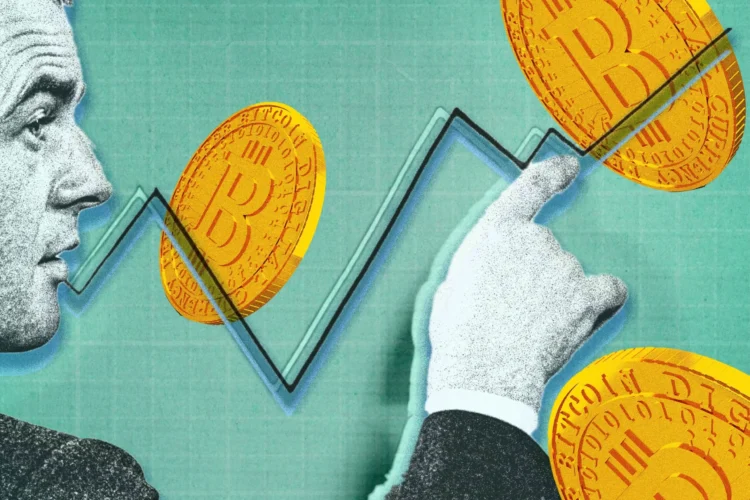Bitcoin Prices: An In-Depth Analysis

With prices fluctuating dramatically over the years, it has become a focal point of interest for investors, speculators, and financial analysts. This article delves into the dynamics of Bitcoin prices, exploring the factors that influence its volatility, the market’s behavior, and the future outlook for Bitcoin as a digital asset.
Understanding Bitcoin: A Brief Overview
Bitcoin was introduced to the world in 2009 by an anonymous person or group known as Satoshi Nakamoto. It was created as a decentralized digital currency, designed to operate without a central authority or intermediary. Bitcoin transactions are recorded on a public ledger called the blockchain, which ensures transparency and security.
Initially, Bitcoin’s value was negligible, and it was primarily used for small transactions and as a proof of concept for blockchain technology. However, as awareness of Bitcoin grew, so did its value. By the end of 2010, Bitcoin had reached a price of $0.30, and by 2011, it had soared to $31. The rapid price increases drew significant media attention and the interest of investors.
Historical Price Trends
To understand the current state of Bitcoin prices, it’s essential to analyze its historical price trends.
2011-2013: The Early Surge
Bitcoin experienced its first significant price surge in 2011 when it reached $31 in June. However, this price was short-lived, and by November, it had plummeted to around $2. This volatility set the stage for Bitcoin’s later price movements.
In late 2012 and early 2013, Bitcoin prices began to rise again, driven by increasing adoption and media coverage. By April 2013, Bitcoin reached an all-time high of approximately $266, only to crash again to around $50 within weeks. This cycle of rapid price increases followed by corrections became a defining feature of Bitcoin’s price behavior.
2017: The Explosive Growth
The year 2017 marked a pivotal moment in Bitcoin’s history. Starting the year at around $1,000, Bitcoin’s price skyrocketed to nearly $20,000 by December. This unprecedented growth was fueled by speculation, increased media coverage, and growing interest from institutional investors. The ICO (Initial Coin Offering) boom also contributed to the frenzy, with many investors flocking to the cryptocurrency market in search of quick profits.
However, the bubble burst in early 2018, with Bitcoin’s price plummeting to around $3,200 by December 2018. This dramatic decline led to skepticism about the future of Bitcoin and other cryptocurrencies, with many experts warning of a possible “crypto winter.”
2020-2021: Institutional Adoption and Price Recovery
After a prolonged bear market, Bitcoin began to recover in 2020, driven by a combination of factors, including increased institutional adoption, the COVID-19 pandemic’s economic impact, and the growing acceptance of cryptocurrencies as a hedge against inflation.
By the end of 2020, Bitcoin had reached a new all-time high of approximately $28,000. The momentum continued into 2021, with Bitcoin reaching an astonishing price of nearly $64,000 in April. The surge was fueled by significant investments from companies like Tesla and Square, as well as the proliferation of cryptocurrency exchanges making it easier for retail investors to buy Bitcoin.
Factors Influencing Bitcoin Prices
Understanding the factors that influence Bitcoin prices is crucial for investors and analysts. The following are some of the key drivers of Bitcoin price fluctuations:
1. Market Demand and Supply
Bitcoin operates on a fixed supply model, with a maximum limit of 21 million coins. As demand for Bitcoin increases, particularly during bullish market conditions, prices tend to rise. Conversely, when demand wanes, prices often decline. This supply-demand dynamic is a fundamental driver of Bitcoin’s price volatility.
2. Regulatory Environment
Regulatory developments can significantly impact Bitcoin prices. Positive regulatory news, such as the acceptance of Bitcoin by a country as legal tender, can lead to price surges. Conversely, negative regulatory actions, such as bans or restrictions on cryptocurrency trading, can cause prices to plummet.
In recent years, the regulatory landscape has evolved, with countries like El Salvador adopting Bitcoin as legal tender, while others, like China, have cracked down on cryptocurrency mining and trading.
3. Institutional Investment
The entry of institutional investors has been a game-changer for Bitcoin. Companies like MicroStrategy, Tesla, and Grayscale have made significant investments in Bitcoin, lending credibility to the asset. This influx of institutional capital has led to increased demand and higher prices.
As more institutional investors enter the market, Bitcoin’s price is likely to be influenced by their buying and selling patterns, as well as their overall perception of the cryptocurrency’s value.
4. Technological Developments
Technological advancements, such as upgrades to the Bitcoin network (e.g., the Taproot upgrade), can also impact prices. Improvements in scalability, security, and functionality can enhance the overall value proposition of Bitcoin, attracting more investors.
5. Market Sentiment
Market sentiment plays a crucial role in Bitcoin price movements. News events, social media trends, and influential figures in the cryptocurrency space can sway public perception and drive price changes. For example, Elon Musk’s tweets about Bitcoin have led to significant price fluctuations in the past.
Bitcoin Price Predictions
The future of Bitcoin prices remains a topic of intense debate among analysts and investors. Some experts are bullish on Bitcoin’s long-term prospects, while others caution that it is still a speculative asset.
Bullish Predictions
- Mainstream Adoption: As more businesses and individuals adopt Bitcoin for transactions, its utility and value may increase. This trend could be further fueled by advancements in technology that make it easier to use Bitcoin in everyday transactions.
- Inflation Hedge: With central banks around the world implementing aggressive monetary policies, Bitcoin is increasingly being viewed as a hedge against inflation. This perception could drive more investors to consider Bitcoin as a store of value.
- Increased Institutional Interest: As more institutional investors enter the market, Bitcoin’s price could continue to rise. The growing acceptance of Bitcoin by financial institutions could legitimize the asset and attract more mainstream investors.
Bearish Predictions
- Regulatory Risks: Ongoing regulatory scrutiny could hinder Bitcoin’s growth. If governments impose strict regulations or ban cryptocurrencies, it could lead to significant price declines.
- Market Volatility: Bitcoin’s inherent volatility may deter some investors, particularly those seeking stable investments. If price swings continue, it could lead to a lack of confidence in Bitcoin as a reliable store of value.
- Technological Risks: As the cryptocurrency space evolves, new technologies could emerge that compete with Bitcoin. If a superior alternative gains traction, it could draw investors away from Bitcoin, negatively impacting its price.
Conclusion
Bitcoin prices have undergone significant fluctuations over the years, shaped by various factors, including market demand, regulatory developments, institutional investment, technological advancements, and market sentiment. As the cryptocurrency landscape continues to evolve, so too will the dynamics influencing Bitcoin’s price.






